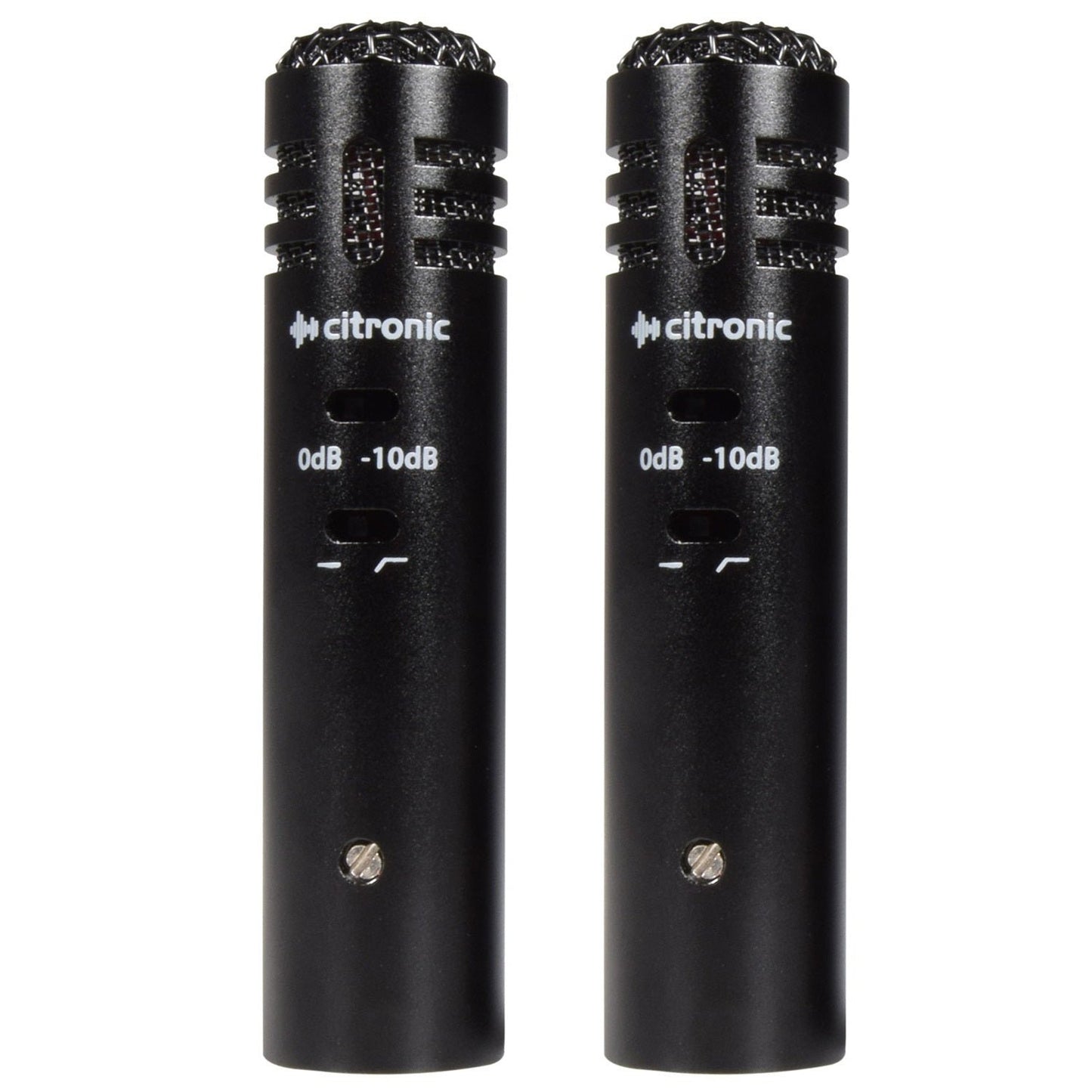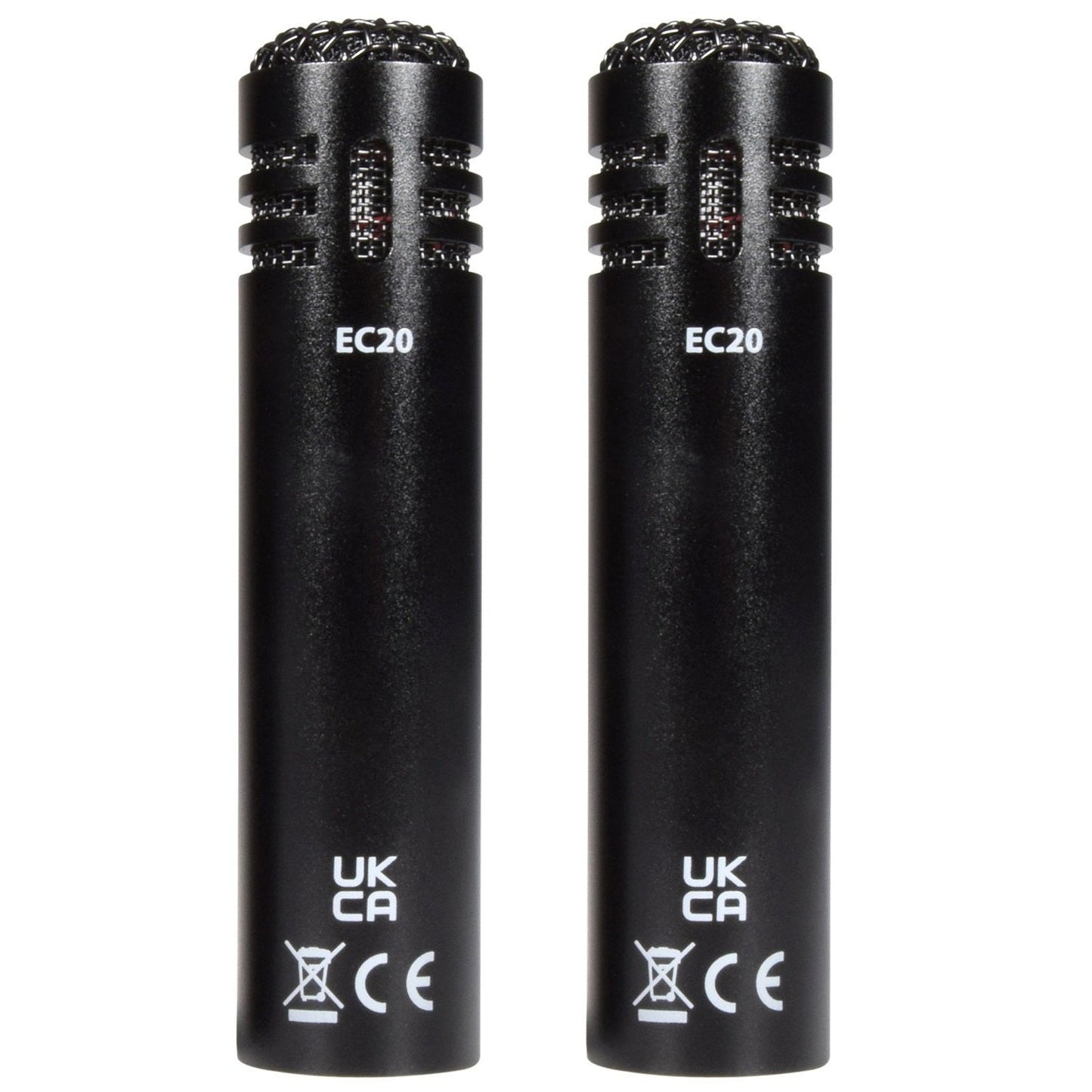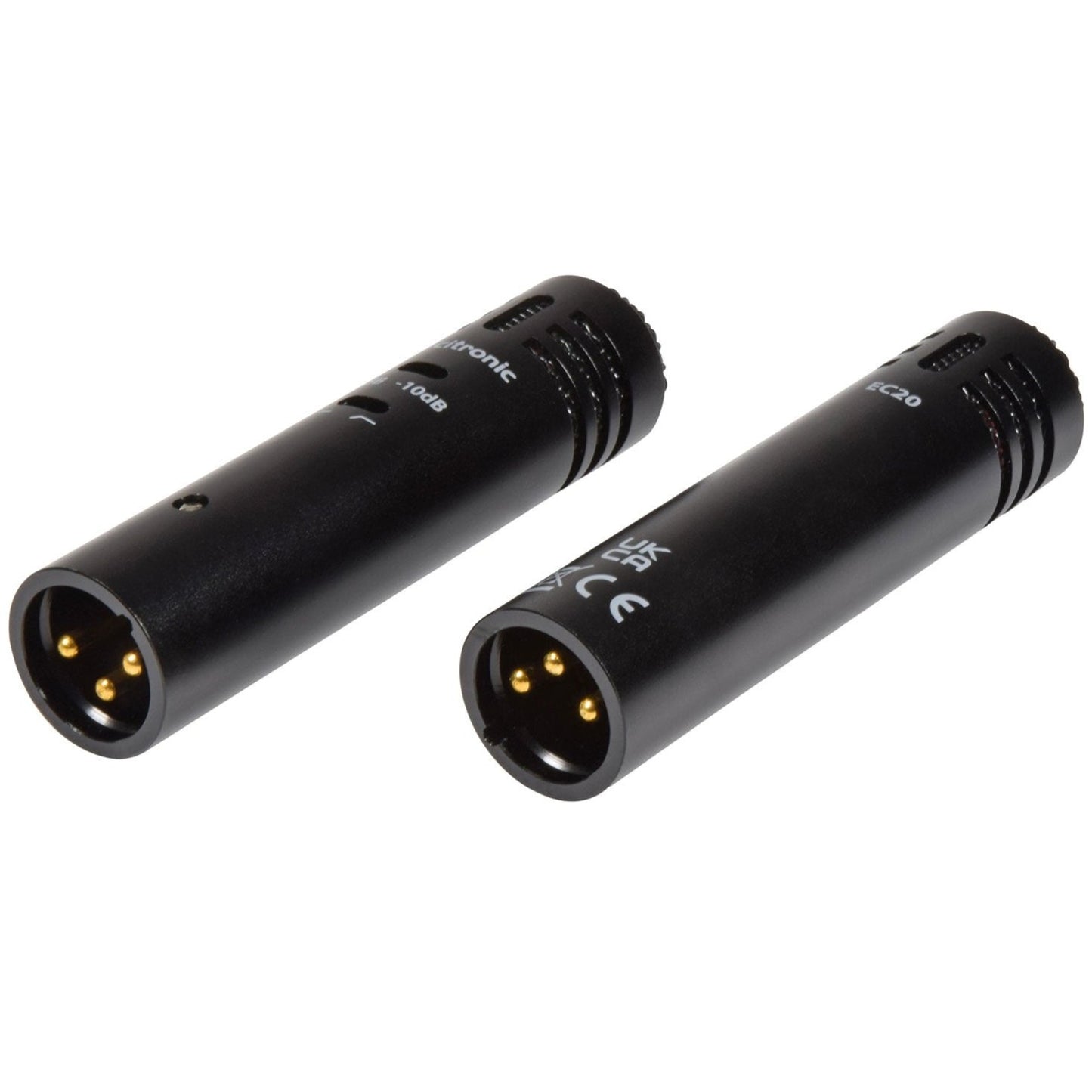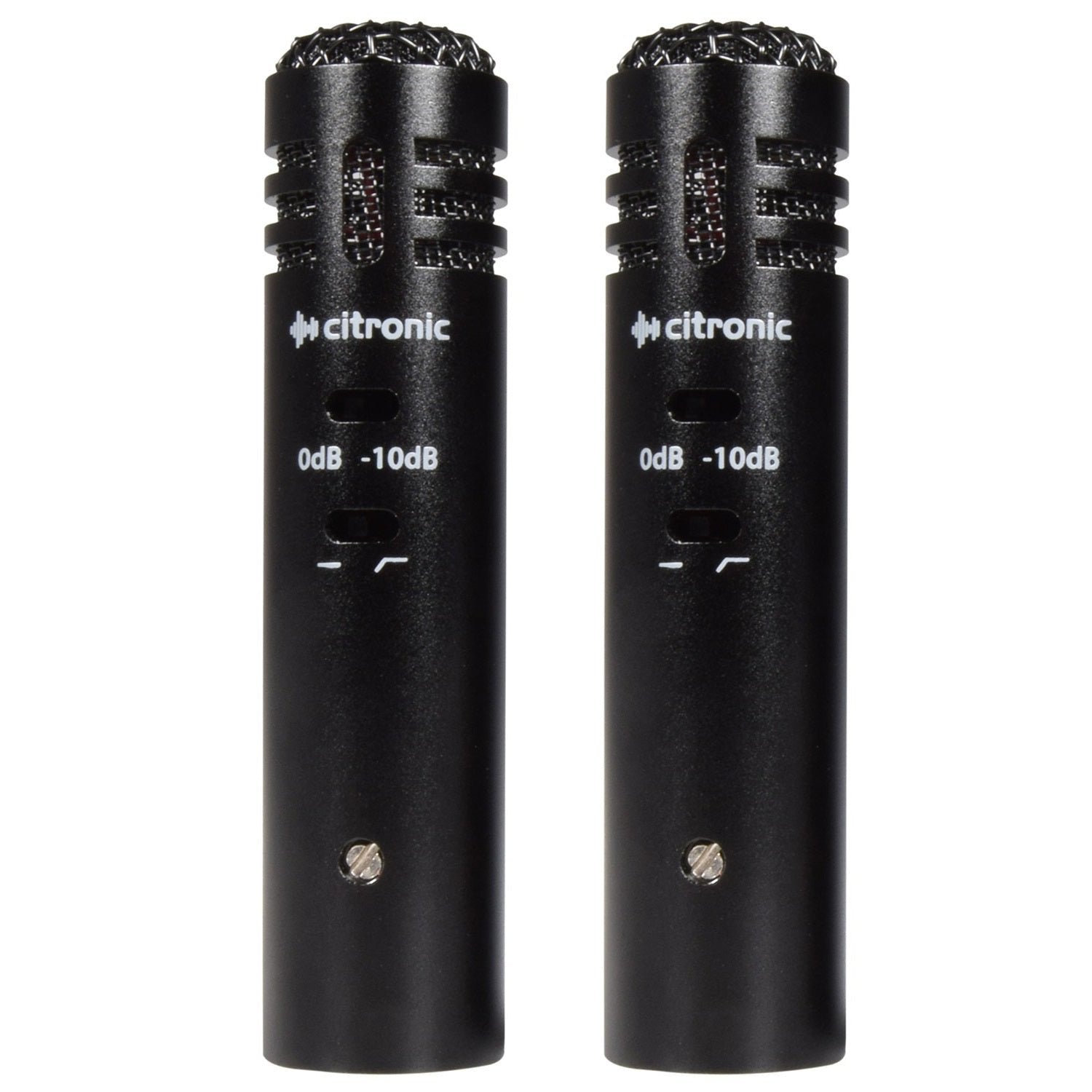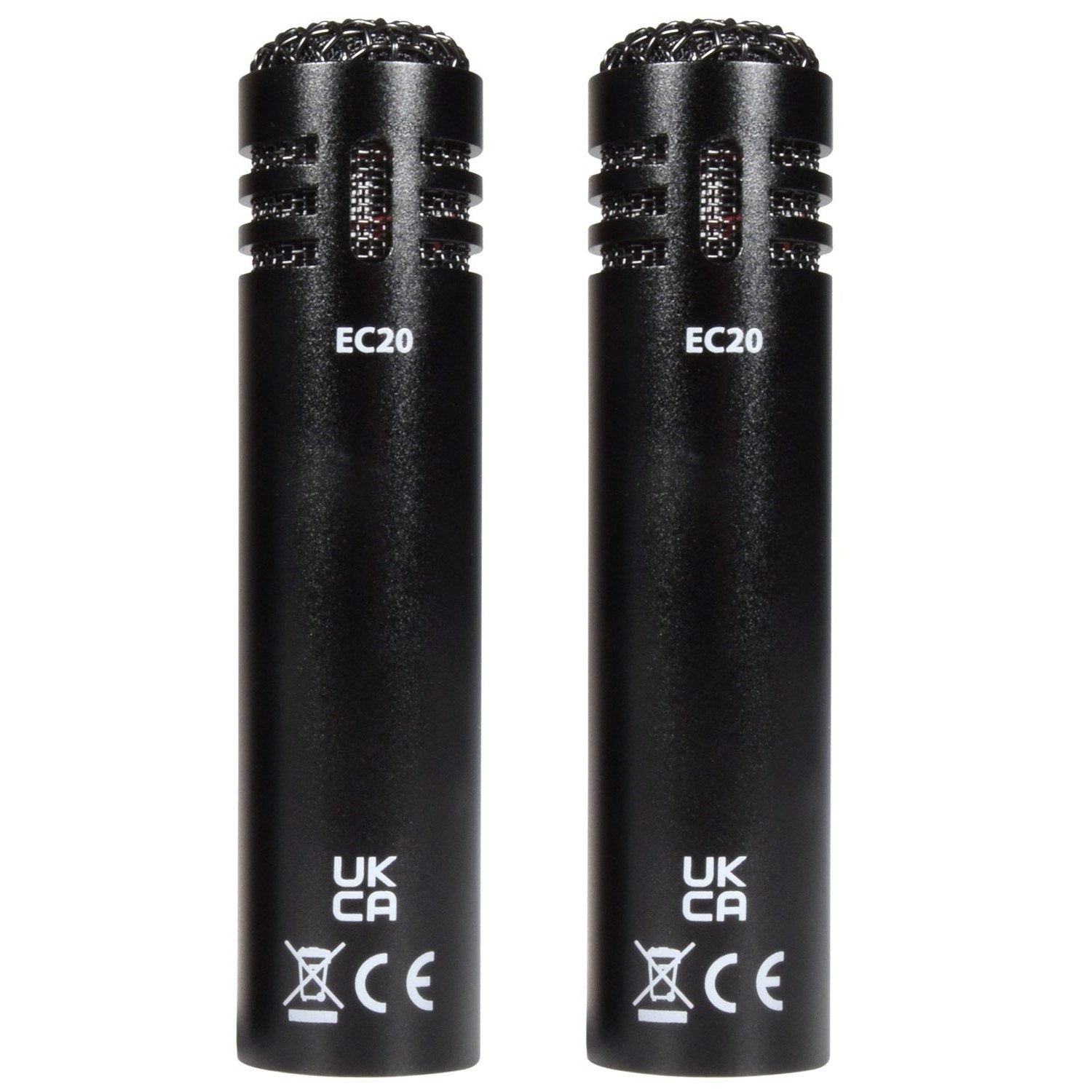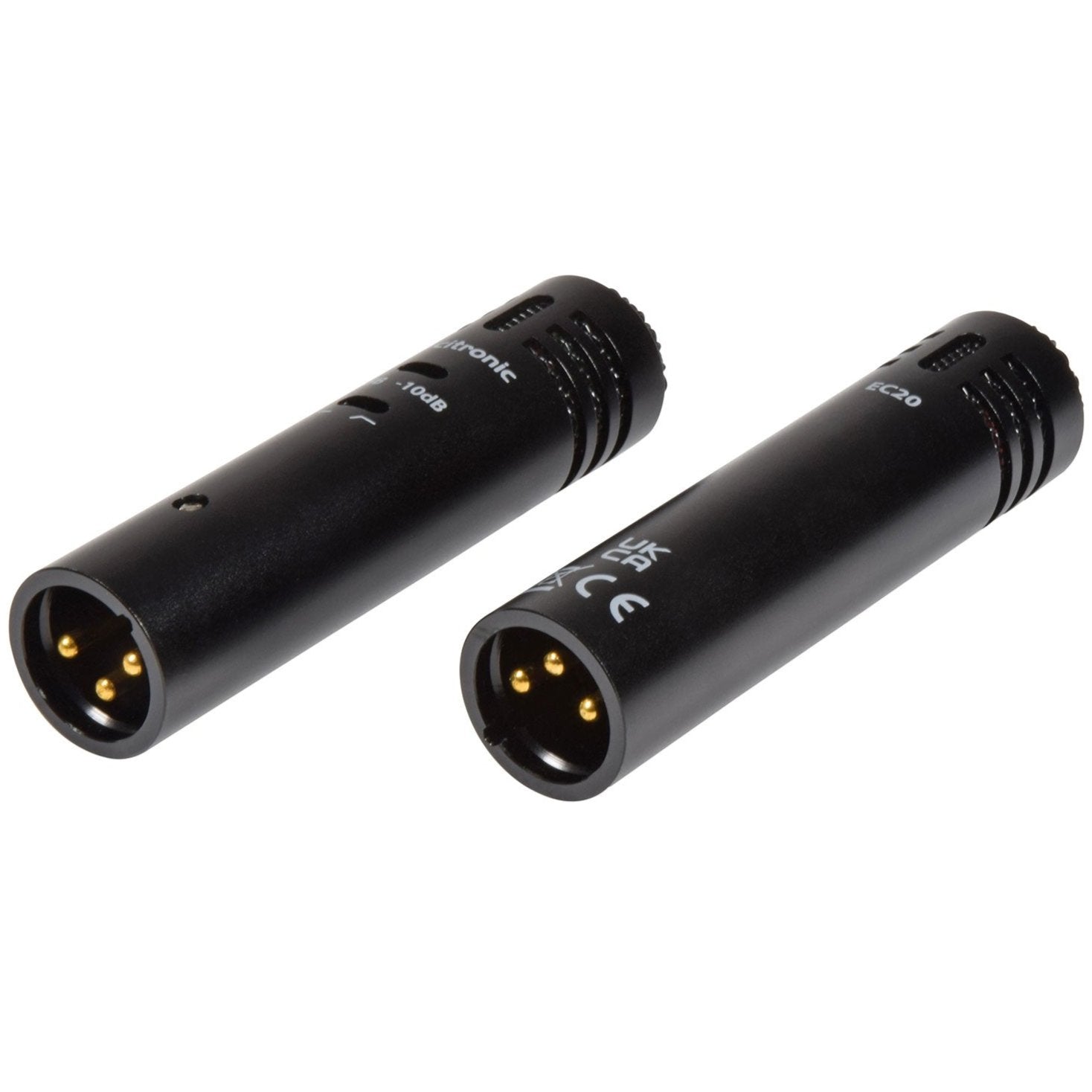Music Bits Company
Condenser Microphones Stereo Pair Citronic ECM20 Instrument / Choral Mics
Condenser Microphones Stereo Pair Citronic ECM20 Instrument / Choral Mics
Couldn't load pickup availability
ECM20 Condenser Mics Stereo - Pair
A pair of miniature cardioid condenser microphones with compact dimensions and ultra-high sensitivity. Applications include recording in stereo, overheads for drums and piano or drop mics for chorus sections.
- Unidirectional, cardioid pickup
- Wide frequency response
- 10dB pad switch for high SPLs
- Low roll off switch to reduce popping and handling noise
- Requires 9-52V phantom power
- Power supply9 - 52V phantom power
- Frequency response50Hz - 17kHz
- Polar patternCardioid
- Sensitivity-45dB (0dB=1V/Pa @ 1kHz)
- Output impedance200 Ohms ±30% (@ 1 kHz)
- Max. input SPL136dB (@ 1kHz ≤1% T.H.D)
- Dimensions (each)83 x 20mmØ
- Weight (each)28g
A condenser microphone is so-called because it uses a capacitor, otherwise known as a condenser, to transform sound into an audio signal. The capacitor is a pair of fine electrical plates, separated by an insulating layer with a charge applied to one of the plates.
As sound waves hit the condenser capsule, the plates vibrate and the distance between them is very slightly varied, allowing charge to leak over from one plate to the other, providing an electrical replica of the sound vibrations, which is then boosted by an internal preamp before being delivered as an audio output.
Condensers are more sensitive and more suited to studio work. Some however, are designed for live work, for example, some can be used as overheads for choirs, pianos, drums etc.
Condensers will pick up the subtleties from vocal and instrumental performance that can sometimes be missed by a dynamic mic. Proximity effect is more pronounced in condenser microphones; it increases the response of bass frequencies as you get closer to the mic and is a benefit used by singers and engineers to colour their sound.
These microphones require a power source, either from a battery or phantom power supplied from the desk or preamp. Ensure you have a phantom power source if considering a condenser microphone without its own battery power.
Share
